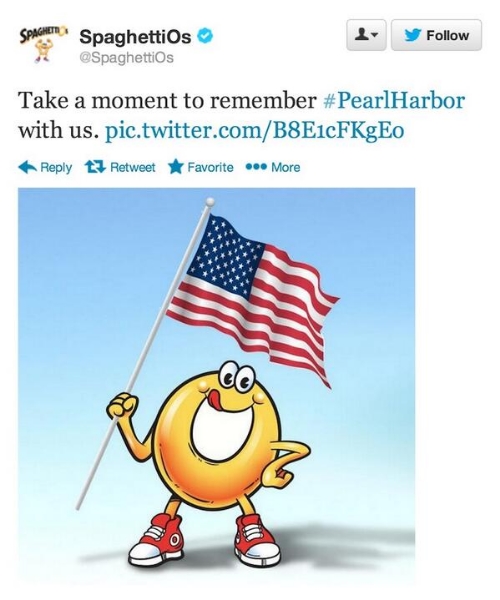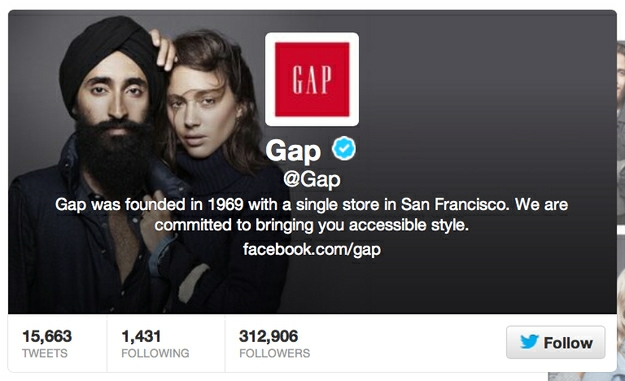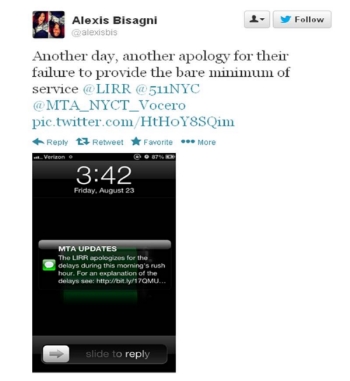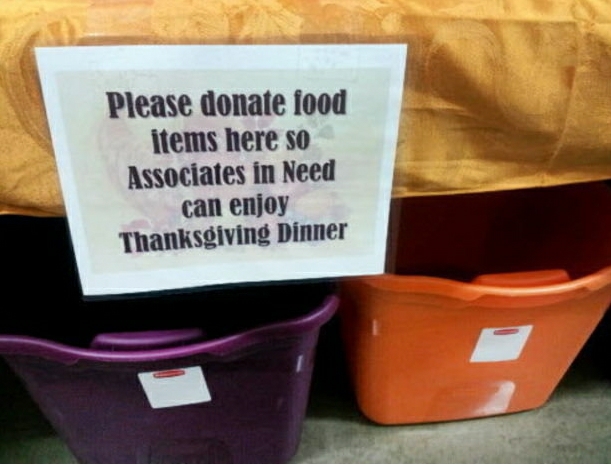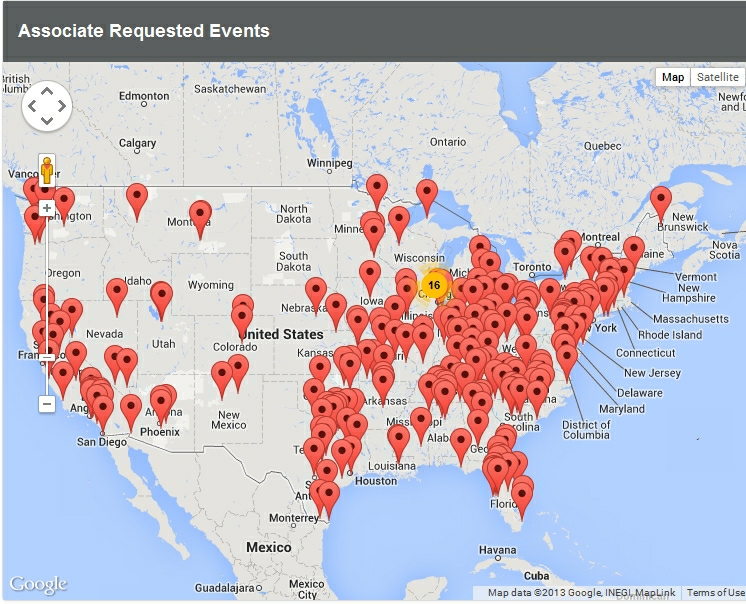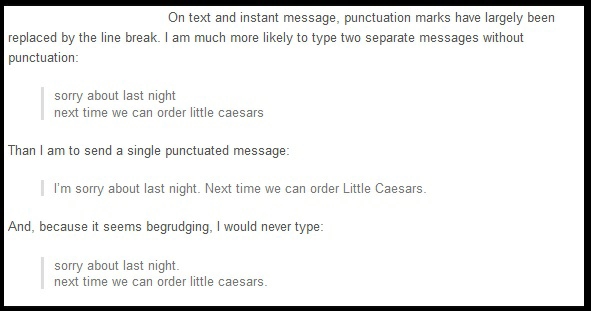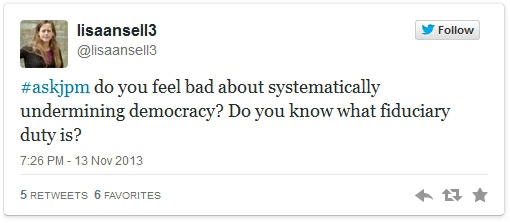Companies May Get Access to What People Say About Them on FB
 Lots of conversations about companies' products and services happen on Facebook, but companies aren't always privy to them. Now, Facebook is looking for a way to give companies access and the ability to respond.
Lots of conversations about companies' products and services happen on Facebook, but companies aren't always privy to them. Now, Facebook is looking for a way to give companies access and the ability to respond.
Facebook is at a disadvantage compared to Twitter, on which brands easily see what it said about them: all they have to do is search for their name. On Facebook, the process is trickier: people have privacy setting that don't allow for searchable conversations. According to Chris Daniels, vice president of business development for Facebook, "We know people are talking about TV, movies, and media on Facebook. We know it's happening on Facebook more than anywhere else. We just need to surface that more."
With newly developed application programming interfaces (APIs), companies could see those conversations on Facebook, but users would have to adjust their privacy settings. Also, how would users react when companies jump in on what might feel like a private conversation among Facebook friends?
Discussion Starters:
- What's your opinion of the new technology? How would you feel as a Facebook user?
- What should companies consider when deciding whether to jump into Facebook conversations or respond to Facebook comments about a brand?
Glassdoor's Best Employer List
Glassdoor is now in the game of ranking companies to work for, using employee data to determine the top 25. The website asks employees to complete anonymous online surveys about career advancement, compensation, benefits, and work/life balance.
Bain tops the list of the "Employees' Choice Awards" as the best company to work for in 2014, followed by Twitter, LinkedIn, Eastman Chemical, and Facebook. It's interesting that three of the top 5 are social media sites, and Twitter's ranking can only help the new stock. Facebook, however, dropped from first place last year to fifth.
On the rest of the list, we see some old favorites from Fortune's Best Companies to Work For, such as Wegman's and Google, which are both in the Fortune top five.
But the companies don't match entirely. Three of Fortune's top five-SAS, CHG Healthcare Services, and The Boston Consulting Group-are missing entirely from Glassdoor's top 50.
Discussion Starters:
- What could explain the difference in Fortune's and Glassdoor's lists?
- Why do you think Facebook dropped from 1 to 5?
- What surprises you about the Glassdoor company list? Do you see companies that you wouldn't expect on the list, and which are missing?
The Worst Airline Has the Fewest Complaints
Why does Southwest have such bad performance stats but the fewest complaints? According to the Bureau of Transportation, Southwest ranks last in on-time departures, mishandled baggage, and denied boardings, yes it gets the fewest complaints.
The data may surprise you considering each airline's reputation. We seem to think of Southwest as a customer service superstar-and it is when it comes to complaints, with the fewest of the bunch. One theory for this disconnect is that Southwest's interactions compensate for its other disappointing metrics:
Discussion Starters:
- Do you agree with the theory that Southwest gets the fewest complaints because of how employees treat customers? What are other possible theories?
- Conversely, look at United's number of complaints. Does that make sense, given that airline's other metrics?
SpaghettiOs' Pearl Harbor Tweet
Campbell Soup has apologized for an inappropriate tweet posted by its SpaghettiOs brand. On December 7, the 72nd anniversary of the Pearl Harbor attack, whoever manages SpaghettiOs' Twitter feed had the wrong idea for commemorating the event:
Twitter critics were quick, retweeting "A tweet that will live in infamy," "First UH-OH, SPAGHETTIOs headline in 3, 2, 1..." and "Those who believe that any publicity is good publicity have not had much publicity." A smiling piece of pasta didn't seem to be the best way to pay respects to the 2,400 Americans who died.
The tweet was deleted, and Campbell Soup issued this apology: "We apologize for our recent tweet in remembrance of Pearl Harbor Day. We meant to pay respect, not to offend." The spokesperson admitted that the Twitter account is managed internally.
Discussion Starters:
- Do you find the tweet offensive, cute, or something else? Are people just too sensitive?
- How could this situation have been prevented?
- Campbell Soup's statement is short. Do you find it effective? How, if at all, could the statement be improved?
Motorola Apologizes for Website Crash
Motorola's website couldn't handle the traffic on Cyber Monday, and the company apologized.
A deal offering $150 off the price of a Moto X smartphone was so popular that people couldn't complete the transaction. Motorola's CEO posted an apology on the company's blog:
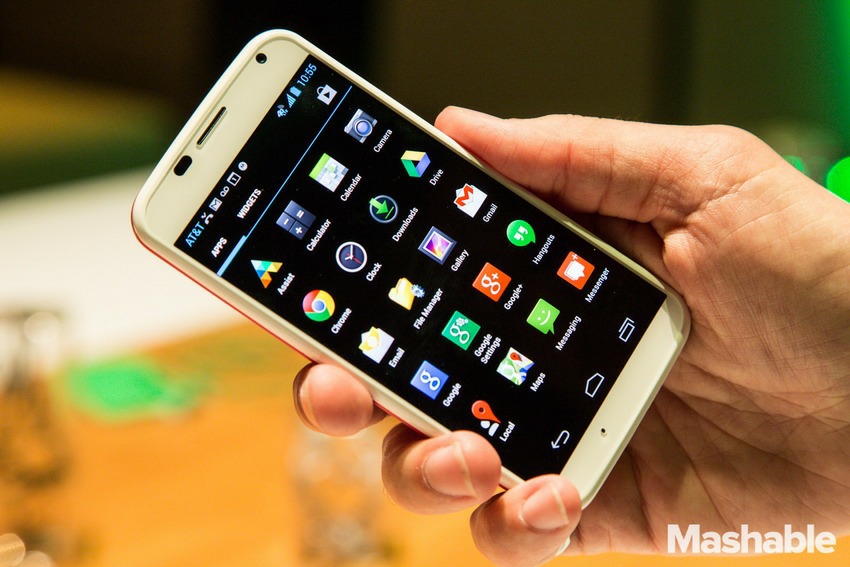 I want to apologize to our customers and fans for the issues we experienced on our website with our Cyber Monday promotion. I want you to understand what happened, and what we are doing to rectify the situation.
I want to apologize to our customers and fans for the issues we experienced on our website with our Cyber Monday promotion. I want you to understand what happened, and what we are doing to rectify the situation.
Overall, feedback about Motorola's response was positive.
Discussion Starters:
- Assess the CEO's apology in terms of content, word choice, tone, audience focus, and tone. What works well, and what could be improved?
- What lessons could other companies learn when experiencing technical problems?
Virgin America's Safety Video Tops 7.8 Million Views
A flight safety video that people want to watch? Virgin America has surpassed Delta's and other creative in-flight videos by producing a fun, catchy musical.
What strikes me about this and all flight safety videos is the requirement to show us how to put on a seat belt. The video pokes fun ("For the .001 percent of you who have never operated a seat belt before..."), but apparently the FAA or whatever agency regulates these issues won't relent.
Discussion Starters:
- Look at Delta's and other airlines' safety videos. Which are best and why?
- What, if any, downsides do you see of showing Virgin's video on a flight?
Gap Responds Swiftly to Racist Comments
When Gap heard one of its ads was graffitied with racist comments, the company responded quickly.
Gap created an ad featuring Waris Ahluwalia, an Indian-American designer and actor, and Quentin Jones, a model and filmmaker. Much of the reaction was positive, but not everyone was happy with the portrayal. This version of the ad made the rounds on Twitter:
When Gap learned of the graffitied ad, the company asked for more information, which is appropriate before deciding how to respond. Soon after, Gap changed its Twitter banner to the original image:
Support for Gap's response traveled throughout Twitter, with people thanking Gap and promising to shop the store for the holidays.
Still, Gap's other ads as part of the "Make Love" campaign are getting mixed reviews. An ad featuring two men was defaced with homophobic comments. That one was ordered removed by the mayor of Chicago.
Discussion Starters:
- What's your assessment of Gap's response? What worked well?
- I don't see any Gap comments or tweets about the situation. Should the company have done anything else?
No Apology About the Metro-North Derailment?
Metro-North is communicating little since a railroad from Poughkeepsie, NY, to Grand Central Station, NYC, derailed, leaving 67 people injured and 4 dead-and an apology doesn't seem forthcoming. No where online does the organization seem to show remorse or any emotion for the impact on people.
Metropolitan Transit Authority (MTA) communications have been paltry, focusing on service issues alone. I suspect the organization is operating under old-school rules, with lawyers cautioning against an apology for fear of admitting guilt. If this is the case, it's a strange mindset: it's unlikely the passengers are responsible in some way, and we know that the train was traveling 82 m.p.h. on a curve with a 30 m.p.h. limit. Signs are pointing towards a sleeping conductor, and lawsuits have already been filed. Why doesn't the MTA do the right thing and show some remorse?
The Metropolitan Transportation Authority(MTA) website is a curious mix of Christmas tidings, service announcements, coupons, and hidden messages. Under the "Transparency" tab on site, under the title "Current News," we see the latest articles, including December 2, when the accident occured:
Wednesday, December 4, 2013 - 18:43
MTA Metro-North Railroad Announces Full Hudson Line Service Thursday
Wednesday, December 4, 2013 - 15:12
See A Christmas Story,The Musical with LIRR
Wednesday, December 4, 2013 - 15:06
LIRR Gets You to Radio City's Christmas Spectacular
Wednesday, December 4, 2013 - 14:53
Our Gift to You – Coupon Savings!
Wednesday, December 4, 2013 - 13:52
Metro-North Crews Rebuild Spuyten Duyvil Tracks
Tuesday, December 3, 2013 - 15:03
Six Lanes For Holiday Travelers At Bronx-Whitestone
Monday, December 2, 2013 - 10:21
Metro-North Hudson Line Service Alert
The article on December 2, "Metro-North Hudson Line Service Alert" is where we find the news. But the bad news is assumed (never previously announced) in the first paragraph and then introduced, oddly, in the ninth paragraph. No mention is made of the 11 critical injuries and four deaths caused by the accident:
Following Sunday's derailment of a Hudson Line train in the Bronx, MTA Metro-North Railroad is operating limited service on the Hudson Line between Poughkeepsie and Yonkers. For travel to Manhattan, customers can catch a shuttle bus at the Yonkers Station to connect with the 242nd Street terminus of the Broadway 1 Subway Line Icon local subway.
New York City Subways will operate two additional 1 Subway Line Icon local trains per hour during the peak periods.
Hudson Line will continue to be cross-honored on the subway.
Many of the 26,000 people who use the Hudson Line on an average weekday are encouraged to ride the Harlem Line as an alternative.
People who do not have to travel are urged to telecommute. People should expect crowded trains.
In cooperation with Westchester and Putnam counties and local municipalities, special parking is being arranged to accommodate additional drivers at the Southeast Station at the northern terminus of the Harlem line and at KensicoDam, which is in walking distance to the Valhalla station. Riders should consult mta.info for additional information on the continuing repair effort and service restoration.
Metro-North Customer Service representatives will be on hand to assist customers in making the transfers.
Cranes and other special heavy equipment are being positioned to remove the rail cars from the area so that repairs can begin. The equipment will arrive this evening begin work following clearance from the NTSB and work will continue through the night.
The accident occurred just before 7:30 a.m. on Sunday, a southbound, Hudson Line train with about 120 passengers on board derailed just north of the Spuyten Duyvil station in the Bronx. All cars derailed.
The National Transportation Safety Board sent a team of investigators who arrived on Sunday and immediately began documenting the scene. Metro-North is cooperating fully with that investigation. With NTSB approval, Metro-North workers will begin clearing the cars, using cranes and heavy equipment.
Customers are advised to check the website for the latest service updates.
A Twitter search for an apology revealed nothing. Metro-North tweeted a flurry of apologies about service failures before the accident, and one rider posted an MTA text message apologizing for service back in August.
A NY Daily News article from November 11 tells us we should expect nothing like an apology:
"The MTA doesn't issue an apology when someone is hit by a subway train - and it doesn't whip out the checkbook, either.
"About 90% of the 92 "man-under" lawsuits that were resolved in the last five years ended in the Metropolitan Transportation Authority's favor, according to a breakdown by the MTA.
"The MTA didn't pay a dime in 73 of those cases. It dispensed with another nine cases with paltry go-away payments averaging $40,000, according to the authority's information. Five big cases did result in payoffs totaling $33 million. . . ."
Between Sunday, when the accident occurred, and today, Thursday, at noon, Metro-North tweeted about 85 times. Three of those tweets apologize only for service issues.
The only hint of humanity seems to be in this tweet:
Discussion Starters:
- How is the MTA different from other organizations we have seen apologize over the past several years?
- What is the legal perspective on apologies? How can a management team effectively balance this with humanity?
- Draft a tweet, news release, and email to victims' families to apologize for the derailment.
Study Finds Facebook Improves Image During a Crisis
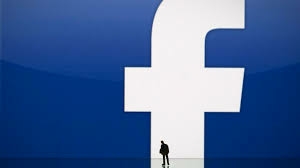 A Missouri School of Journalism study found that Facebook posts improved how people perceived organizations during a crisis. A doctoral candidate showed study participants two fictional stories about universities in crisis. Then, participants read Facebook posts by each university and were asked how the felt about the crisis. Attitudes about the organizations improved, and participants thought the crisis was less severe.
A Missouri School of Journalism study found that Facebook posts improved how people perceived organizations during a crisis. A doctoral candidate showed study participants two fictional stories about universities in crisis. Then, participants read Facebook posts by each university and were asked how the felt about the crisis. Attitudes about the organizations improved, and participants thought the crisis was less severe.
Seoyeon Hong also found that a narrative, or storytelling, type of writing in the Facebook posts was more effective than a style that wasn't narrative:
"This indicates that the effect of narrative tone in organizational statements during crises increases perceived conversational human voice, which represents a high level of engagement and best communicates trust, satisfaction, and commitment to the audience. This is an important practice for public relations professionals because perceptions that an organization is sincerely trying to provide timely and accurate information during a crisis can lead to not only more favorable attitudes toward the organization, but also perceptions of less responsibility the organization has for causing the crisis."
Discussion Starters:
- Does this research surprise you? Why or why not?
- Find an example of an organizationi's Facebook post written as a narrative. What is effective about that style?
Yale Communicates During "Lockdown"
Yale University had a communication challenge after a threatening phone call caused a campus lockdown. A student reported that his roommate was planning to go to campus with a gun. Later, the police interviewed a witness who saw someone with a "long gun." The call turned out to be a hoax, and reports of someone with a gun could have been a police officer, who were making their way to the scene.
Still, the university sprung into action, possibly with concerns about another Virginia Tech or Sandy Hook shooting. The university policy department provided updates on its Facebook Page.
Appropriate for crisis communications, these bad-news messages use the direct style: the main point is right up front.
Now, on Yale's Emergency Management site, we see no mention of a potential gunman. Likely the university would like to see the entire incident go away.
Discussion Starters:
- Look for other university communications about the incident. What else can you find?
- Although I can't find the email on the web, the articles reference one sent from the university to students and parents. What do you think was included in the message? Draft a possible outline of the email.
Walmart Criticized for Food Drive for Employees
Walmart Foundation has initiated a campaign against hunger, but an internal effort to help Walmart associates is getting more attention. In this video produced by Walmart Corporate, an executive explains the $2 billion effort, which includes a food drive.
The sign, below, taped to a table inside an employee breakroom at Walmart store, isn't getting such a welcome response. A Walmart employee in Canton, Ohio, photographed the sign as an indication that the company pays insufficient wages.
Spokesperson Kory Lundberg told Yahoo Finance,
"That store has set up a bin for associates to help out other associates. These are people that have had some unforeseen hardship in the last year. Maybe their spouse lost a job, or they experienced the death of a loved one, or a natural disaster impacted their home-things you just can't plan for. It's a chance for associates to look out for and help each other."
Discussion Starters:
- What's your reaction to the food drive for employees? Do you buy the spokesperson's explanation, does this prove that Walmart doesn't pay enough, or something else?
- What important messages do you hear in the Walmart video? How effective is the video in convincing you that Walmart has a serious commitment to ending hunger?
Walmart Workers Plan Strike on Black Friday
Our Walmart, an organization of employees, is planning a strike on Friday, November 29, Black Friday. On its website, Our Walmart conveys the group's mission:
OUR Walmart Vision
We envision a future in which our company treats us, the Associates of Walmart, with respect and dignity. We envision a world where we succeed in our careers, our company succeeds in business, our customers receive great service and value, and Walmart and Associates share all of these goals.
Called "Black Friday Walmart Protests," the strike is planned across the U.S. This map shows locations where associates have requested a strike.
Discussion Starters:
- Clearly, Our Walmart uses emotional appeal as the basis for its arguments. What about the video works well and what does not?
- Assess the Our Walmart website for effective design, organization, word choice, and so on. What improvements would you recommend for the site owners?
The Period and Tone in a Text Message
To some, using a period in a text message changes the tone. Because few people use any punctuation in texts, the period, according to one article, is taking new meaning.
Mark Liberman, professor of linguistics at the University of Pennsylvania, explains how a period may be intepreted by a reader:
"In the world of texting and IMing … the default is to end just by stopping, with no punctuation mark at all. In that situation, choosing to add a period also adds meaning because the reader(s) need to figure out why you did it. And what they infer, plausibly enough, is something like 'This is final, this is the end of the discussion or at least the end of what I have to contribute to it.'"
Instead, paragraph breaks are more common to start new sentences, presumably because the return key is easier to access than the period. (On the iPhone, the return key is on the same screen as the alphabet, while the period requires a keyboard change to access.)
The article author claims that the question mark also has "outgrown its traditional purpose," now used to downplay an otherwise "cocky" statement, such as "I think he likes me?"
Discussion Starters:
- Do you agree with the author's assessment of the period? Does it imply tone to you?
- I've been accused of over-punctuating text messages. And it's not unheard of for me to use a semi-colon in a text. Do I need professional help?
New "Teach" Campaign
The Department of Education is trying a new approach to get top students to become teachers. With help from Teach for America, Microsoft, State Farm, the teachers' unions, "Make More. Teach," videos feature teachers doing interesting work and show teaching as a rewarding profession.
Taylor Mali narrates the videos. Mali became associated with teaching after his comedy bit, "What Teachers Make." His commentary responded to criticism from someone asking the question about a teacher's salary.
The recruiting campaign is important, considering how the U.S. lags behind other countries in recruiting the best students. The comparison is clear in a McKinsey report, "Closing the Talent Gap: Attracting and Retaining Top-third Graduates to Careers in Teaching," which is featured in of Business Communication: In Person, In Print Online, Chapter 10.
Discussion Starters:
- Watch the videos. In what ways are they similar to the military recruiting ads?
- Analyze the persuasive strategies used. What examples do you find of logical arguments, emotional appeals, and credibility? How are visuals, voice, and music used? What types of people are portrayed, and so on?
Another Video from Low Pay Is Not OK
Here's another video brought to us by Low Pay Is Not OK, the organization promoting higher wages for fast-food workers. The last video was a captioned telephone call from McDonald's employee Nancy Salgado, asking about health and other benefits. This one takes issue with advice from the company to its employees.
In an email, the video was advertised with this introductory text:
Don't they read this stuff before they post it on the web?
McDonald's knows they don't pay their employees like me enough to make ends meet. But instead of paying us enough to get by, their "help" consists of a website that's chock full of CLUELESS (and offensive!) tips. You have to see it to believe it.
Titled, "McDonald's Really Told Their Employees to Quit Complaining," the video refers to documentation for employees:
Discussion Starters:
- What persuasion strategies are used in the video? Which are most and least effective in encouraging higher pay for workers?
- The music and graphics are similar to those used in the previous video. In what ways do they support and detract from the message?
KlearGear Charges Customer $3,500 for a Bad Online Review
A customer who didn't receive what she ordered from KlearGear wrote a negative review on a complaint site and was charged $3,500. KlearGear sells desk toys such as an LED shoelaces and something called a Splat Stan Coaster-a figure squashed by a coffee mug (not on my Christmas wish list).
Three years after the customer posted on the site RipoffReport, KlearGear contacted her husband and requested $3,500, based on a clause in the company's terms of service (which apparently wasn't included at the time):
Non-Disparagement Clause
In an effort to ensure fair and honest public feedback, and to prevent the publishing of libelous content in any form, your acceptance of this sales contract prohibits you from taking any action that negatively impacts KlearGear.com, its reputation, products, services, management or employees.
Should you violate this clause, as determined by KlearGear.com in its sole discretion, you will be provided a seventy-two (72) hour opportunity to retract the content in question. If the content remains, in whole or in part, you will immediately be billed $3,500.00 USD for legal fees and court costs until such complete costs are determined in litigation. Should these charges remain unpaid for 30 calendar days from the billing date, your unpaid invoice will be forwarded to our third party collection firm and will be reported to consumer credit reporting agencies until paid.
The clause, of course, is ridiculous. Trying to control social media conversation is a fool's game and can only hurt a company in the long-run. KlearGear made the situation worse when it closed its Twitter and Facebook accounts.
Discussion Starters:
- What's your view of KlearGear's "Non-Disparagement Clause"? One writer calls it "contemptible, unethical, and un-American." Do those adjectives sum it up for you-or are others more appropriate?
- How would you advise KlearGear to handle the social media situation?
- Imagine that KlearGear reopened its Facebook page. Write an apology post on behalf of the company.
Reinforcing Advertising Rules for Bloggers
 Bloggers who are paid by companies to advertise a product or service must come clean about the relationship, according to the U.K. Advertising Standards Authority (ASA). This should be just a reminder to bloggers because the rules aren't new-but apparently they aren't followed consistently.
Bloggers who are paid by companies to advertise a product or service must come clean about the relationship, according to the U.K. Advertising Standards Authority (ASA). This should be just a reminder to bloggers because the rules aren't new-but apparently they aren't followed consistently.
The ASA article indicates that bloggers asked for clarification:
"Why are we doing this? We've received a steady stream of enquiries from bloggers wanting clarity on this issue and how the rules apply to their blogs."
Below are the rules:
Rules
2.1 Marketing communications must be obviously identifiable as such.
2.2 Unsolicited e-mail marketing communications must be obviously identifiable as marketing communications without the need to open them (see rule 10.6).
2.3 Marketing communications must not falsely claim or imply that the marketer is acting as a consumer or for purposes outside its trade, business, craft or profession; marketing communications must make clear their commercial intent, if that is not obvious from the context.
2.4 Marketers and publishers must make clear that advertorials are marketing communications; for example, by heading them "advertisement feature."
Part of the issue may be that bloggers are paid but asked by companies not to disclose the relationship. Although this puts bloggers in a difficult position, the rules-and ethics-are clear. Perhaps companies need the reminder, not bloggers.
Discussion Starters:
- What situations may be blurry for bloggers? Think of a few examples when the rules may not be clear.
- What are the U.S. rules for bloggers? Research the issue and compare the advice for U.S. blogger.
- What are the rules for people who tweet? Should celebrities, for example, reveal their relationships with companies they promote?
Microsoft Emails Employees About Ranking System
In an email to employees, Microsoft management announced the elimination of an employee performance ranking system. (Probably coincidentally, Yahoo just announced the implementation of a similar system.)
Ranking systems force managers to place their employees' performance on a bell curve, comparing each within a department or division. In the strictest systems, employees who are in, for example, the bottom 5%, are terminated. According to The Institute of Corporate Productivity, cited in a BusinessWeek article, these systems are falling out of favor, with only 5% of high-performing companies using the process in 2011.
At best, ranking employees encourages managers to differentiate performance, rewarding top performers and paying attention to underperformers. At worst, ranking may focus too much on data and fails to acknowledge that some departments simply perform better than others. Managers argue that they lose control with such rigid systems.
Here's the beginning of the Microsoft email to employees:
To Global Employees,
I am pleased to announce that we are changing our performance review program to better align with the goals of our One Microsoft strategy. The changes we are making are important and necessary as we work to deliver innovation and value to customers through more connected engagement across the company.
This is a fundamentally new approach to performance and development designed to promote new levels of teamwork and agility for breakthrough business impact. We have taken feedback from thousands of employees over the past few years, we have reviewed numerous external programs and practices, and have sought to determine the best way to make sure our feedback mechanisms support our company goals and objectives. This change is an important step in continuing to create the best possible environment for our world-class talent to take on the toughest challenges and do world-changing work.
Discussion Starters:
- What's your view of performance ranking sytems? Have you experienced a similar process at work?
- Assess the full Microsoft email. How is it organized? How does it consider the audience? What are the main points? Overall, what works well, and what could be improved?
Newspaper Regrets Referring to Gettysburg Address as "Silly Remarks"
Imagine a newspaper dismissing Lincoln's Gettysburg Address as insignificant. This week, a Harriburg, Pennsylvania paper retracted a 1863 editorial:
"We pass over the silly remarks of the President. For the credit of the nation we are willing that the veil of oblivion shall be dropped over them, and that they shall be no more repeated or thought of."
Patriot & Union Editorial, 1863: On the Gettysburg Address
It's a little late, but the timing is appropriate: on Tuesday, we'll celebrate the 150th anniversary of the Gettysburg Address.
Discussion Starters:
- Why wait 150 years? Why not 100? Or 50? Why publish a retraction at all?
- What justification do you see for the initial review? What other reactions were prevalent at the time?
JPMorgan Chase Cancels Twitter Q&A
JPMorgan Chase had good intentions when scheduling a Twitter Q&A with students about career advice, but the strategy backfired. The company encouraged questions of executive James B. Lee under the hashtag #AskJPM.
Of course, curious students weren't the only ones who used the hashtag. Plenty of snarky comments piled in.
It's a delicate time for JPMorganChase to expose itself on social media. Just last month, the company agreed to pay a $13 billion settlement because of misleading mortgage practices (the fourth multi-million-dollar settlement in 2013). A Wall Street Journal article two weeks ago explored CEO Jamie Dimon's "Complicated Relationship with Washington." And today, Reuters reported an investigation into the company's practices in China, including potentially widespread bribery and a questionable decision to pay "$1.8 million over two years to a small consulting firm run by the daughter of former Chinese Premier Wen Jiabao."
In the end, JPMorgan Chase cancelled the Q&A:
PR Daily offers sound advice for companies considering similar customer engagement activities:
"Social media is about interacting with people, but it's also about occasionally sticking a finger in the air and seeing which way the wind is blowing."
Discussion Starters:
- Do you find fault with JPMorgan Chase's attempt? Was the Q&A a nice idea, or should the management team have known better?
- What's your reaction to the cancellation tweet? In what ways is it effective or not?
- Apply PR Daily's advice to other social media failures. How is this useful for companies?






